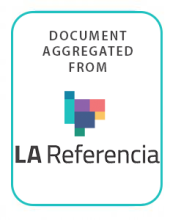Land Library
Welcome to the Land Portal Library. Explore our vast collection of open-access resources (over 74,000) including reports, journal articles, research papers, peer-reviewed publications, legal documents, videos and much more.
/ library resources
Showing items 1 through 9 of 33.For two decades, increasing concerns about urban sustainability have driven Australian metropolitan planning efforts to call for fundamental changes to existing urban forms. These changes are intended to develop more compact cities characterised by a poly-nodal network of dense activity centres.
Studies evaluating potential of Green Infrastructure (GI) development using traditional Boolean logic-based multi-criteria analysis methods are not capable of predicting future GI development under dynamic urban scape.
This study examined how planning mechanisms support affordable housing supply in Australia and overseas.
In 2008, a presidential regulation number 54 (Peraturan Presiden Nomor 54 Tahun 2008 - Perpres 54/2008) that regulates uses of land for various degrees of utilization and conservation across Jakarta, Bogor, Depok, Tangerang, Bekasi, Puncak and Cianjur (Jabodetabekpuncur) was issued.
Users of transport infrastructures nearby hazardous plants may represent important populations potentially impacted by a major accident. Toulouse catastrophe in 2011 has been an illustrative example as it strongly impacted highway users.
The identification of suitable models for predicting daily water flow is important for planning
Author Posting. © The Author(s), 2009. This is the author's version of the work. It is posted here by permission of IOP Publishing for personal use, not for redistribution. The definitive version was published in Environmental Research Letters 4 (2009): 044008, doi:10.1088/1748-9326/4/4/044008.
This paper develops a unifying framework for spatial and environmental economics, based on equilibrium considerations for population games. The main contribution of this paper consists of introducing a consistent concept for spatial welfare.



